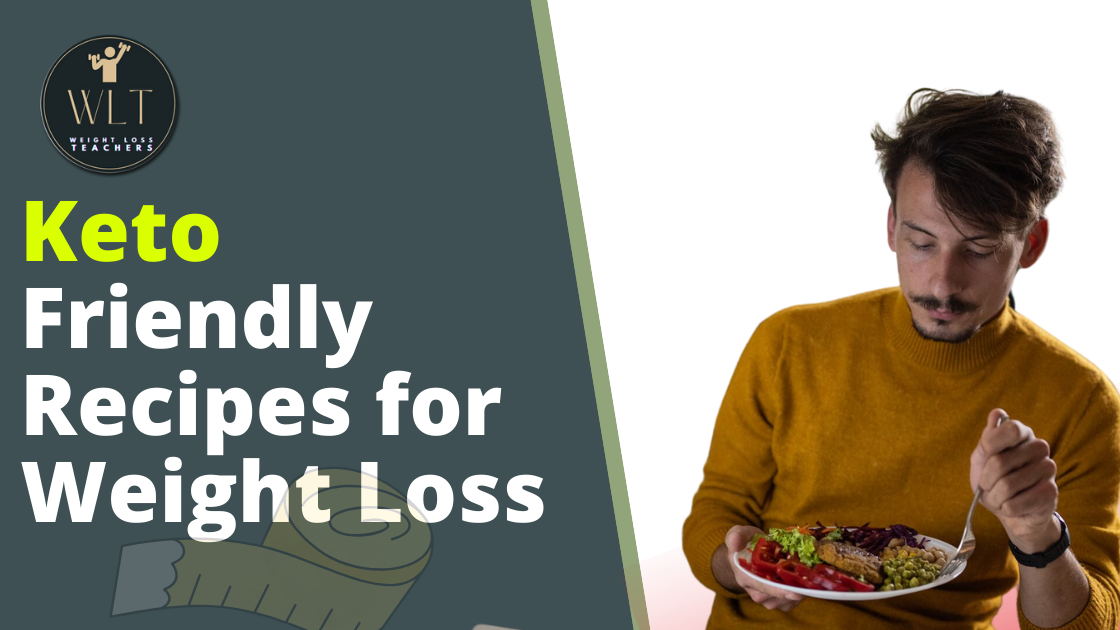
Keto Friendly Recipes for Weight Loss
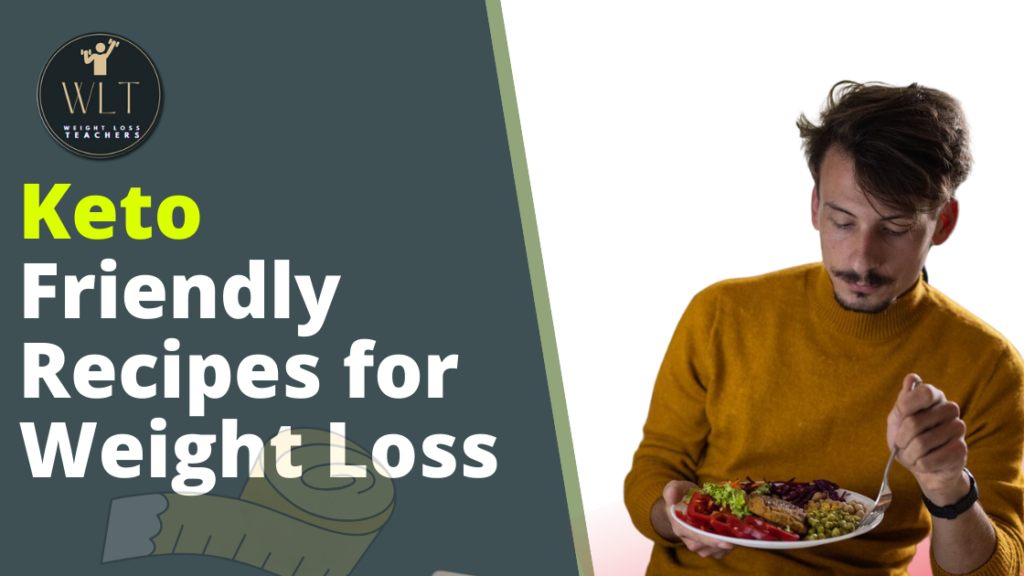
In a world where dietary trends come and go, the ketogenic diet has firmly established itself as a potent tool for weight loss and enhanced health. The keto diet for weight loss, with its low-carbohydrate, high-fat strategy, stimulates the body to enter a state of ketosis, in which it burns fat for energy rather than carbohydrates.
Table of Contents
Introduction
This metabolic change not only aids in weight loss but also provides a slew of other health benefits. In this comprehensive guide, we will look at a wide range of keto-friendly dishes that will help you lose weight while also delighting your taste buds.

What exactly is the Keto Diet?
The ketogenic diet, sometimes known as the “Keto” diet, is a nutritional approach that has gained popularity because of its possible benefits in weight loss, increased energy levels, and certain health concerns. The keto diet for weight loss is defined by its particular macronutrient composition, which includes a low carbohydrate intake, a high intake of healthy fats, and a moderate amount of protein. This unusual mix of food ratios induces the body into a metabolic state known as ketosis, in which it burns fat for energy rather than glucose produced from carbohydrates.
Ketosis is the primary metabolic mechanism that distinguishes the keto diet from other dietary programs. When you eat a high-carbohydrate meal, your body quickly transforms those carbs into glucose, which is your body’s major source of energy. The keto diet, on the other hand, deprives the body of glucose by significantly lowering carbohydrate intake to less than 50 grams per day. As a result, the body switches its energy source to stored fat, breaking it down into molecules known as ketones, which can be utilized as fuel for numerous biological activities, such as the brain and muscles.
This metabolic change is beneficial not only for people who want to lose weight but also for people who have certain health concerns. According to research, the keto diet may aid in the management of illnesses such as epilepsy, type 2 diabetes, and polycystic ovarian syndrome (PCOS), owing to its capacity to normalize blood sugar levels and lower insulin resistance.
To effectively follow the keto diet for weight loss, it is critical to minimize carbohydrate intake while also prioritizing high-quality sources of fat and protein. Avocados, olive oil, almonds, and fatty seafood should account for a considerable amount of daily calorie consumption. This fat combination is critical for maintaining ketosis while also supplying important nutrients and satiety. Furthermore, modest protein consumption is recommended since excessive protein might potentially disturb ketosis by converting to glucose via a process known as gluconeogenesis.
Portion control and careful eating are also important aspects of the keto diet. Because carbohydrates are limited, it is critical to select nutrient-dense, low-carb veggies and constantly monitor daily carbohydrate intake. Many keto practitioners also diligently track their macronutrients to ensure they stay within their ideal range.
In essence, the ketogenic diet is a low-carb, high-fat nutritional approach that is intended to induce and maintain ketosis in the body. Individuals adopting the keto diet hope to reap possible benefits linked to weight control, improved metabolic health, and other medical diseases by limiting carbohydrate intake and focusing on healthy fats and moderate protein consumption. While the keto diet has shown potential, it is critical to speak with a healthcare practitioner or qualified dietitian before making any significant dietary changes to ensure they correspond with personal health goals and objectives.
Fundamentals of the Ketogenic Diet
The ketogenic diet, sometimes known as the keto diet, is a nutritional approach that has gained popularity due to its possible benefits in weight loss, increased energy levels, and certain health concerns. Specific macronutrient ratios and metabolic processes that set the keto diet for weight loss apart from other diets are what define it at its core. Let’s go deeper into the principles of the ketogenic diet to better understand how it works and why it’s become a popular choice for many people looking to lose weight and enhance their health.
- Low Carbohydrate
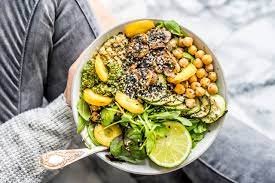
The keto diet is based on a considerable reduction in carbohydrate intake. This often means reducing daily carbohydrate consumption to 20-50 grams, however, individual needs may vary. The rationale for this significant carbohydrate reduction is due to the metabolic shift that occurs when carbohydrate availability is limited.
When you eat carbohydrates, your body converts them into glucose, which is the primary source of energy. In the absence of adequate carbs, however, the body is obliged to seek another energy source. This is where fat enters the picture.
The keto diet essentially starves the body of glucose by substantially lowering carb intake. As a result, the body’s principal energy source becomes stored fat. The state of ketosis is defined by this shift in metabolism from carbohydrate dependence to fat use.
- Protein in Moderate Amounts
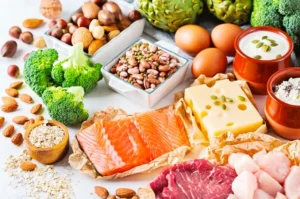
Protein consumption is essential to the keto diet, although it is limited. Excess protein consumption may impair the body’s capacity to maintain ketosis since it can be turned into glucose via a process known as gluconeogenesis. This implies that consuming too much protein may cause your body to create enough glucose to knock you out of ketosis, preventing you from reaping the full benefits of the diet.
Individuals on the keto diet often aim for moderate protein consumption to reach the correct balance. This ensures that they acquire adequate protein for vital biological functions like muscle maintenance and repair while remaining in ketosis.
- High in Good Fats
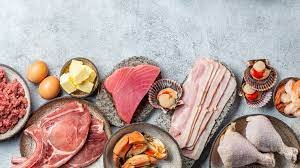
In a keto meal plan, healthy fats are the headliner. Avocados, olive oil, nuts, seeds, and fatty seafood are good sources of necessary fats for ketosis and overall health. These fats are not only tasty but also extremely satiating, allowing people to feel full and content while sticking to their diet.
The keto diet’s concentration of healthy fats serves two functions. First, when carbs are scarce, these fats are utilized as an energy source, assisting the body’s transition into and maintenance of ketosis. Second, healthy fats are required for a variety of body processes, including the absorption of fat-soluble vitamins (A, D, E, and K), hormone generation, and cell membrane preservation.
- The Keto Diet

The ketogenic diet’s ultimate goal is to achieve and sustain ketosis. In the metabolic state of ketosis, the body uses ketone bodies as its main source of energy. This switch from glucose to ketones has various advantages, making it critical to the success of the keto diet.
Weight Loss: Because the body effectively burns fat for fuel, individuals might lose significant weight as their stored fat reserves are depleted.
Consistent Energy Levels: Ketones provide a consistent source of energy, eliminating the energy fluctuations that are common with carb-heavy diets.
Better Blood Sugar Control: Ketosis helps to regulate blood sugar levels, making it a vital tool for people with type 2 diabetes or those who want to lower their chance of getting the condition.
Enhanced Cognitive Function and Mental Clarity: Some people experience enhanced cognitive function and mental clarity while in ketosis.
Hunger limit: Ketones decrease hunger, making it easier for people to limit their calorie intake.
The ketogenic diet is based on the ideas of eating low carbohydrate, moderate protein, and focusing on healthy fats. These dietary choices induce the metabolic state of ketosis, in which the body burns fat for energy, resulting in weight loss and a variety of health benefits. While the keto diet is not for everyone, it has proven to be an effective strategy for people looking to lose weight, manage blood sugar, and improve general health. Before starting a keto diet for weight loss, it’s crucial to contact a healthcare expert or registered dietitian to ensure it corresponds with individual health objectives and needs.
Easy Keto Recipes For Weight Loss
Now that we’ve reviewed the fundamentals of the keto diet, let’s look at some tasty keto friendly recipes that are ideal for your weight loss journey.
Keto Egg Muffins for Breakfast

Ingredients:
- 6 eggs
- 12 cup spinach, chopped
- 14 cup diced bell pepper
- 14 cup finely chopped onion
- 14 cup cooked bacon, chopped
- Season with salt and pepper to taste
- 1 teaspoon olive oil
Instructions:
- Preheat the oven to 350 degrees Fahrenheit.
- In a large mixing bowl, whisk together the eggs, spinach, bell pepper, onion, and bacon.
- Season with salt and pepper to taste.
- Grease a muffin tray with olive oil and spoon the egg mixture into each cup, about 3/4 full.
- Bake the egg muffins for 20-25 minutes, or until golden brown and firm.
- Serve immediately and enjoy!
Cauliflower Fried Rice on the Keto Diet

Ingredients:
- 1 grated head cauliflower
- 2 tbsp of coconut oil
- 12 cup chopped onion
- 12 cup carrot, diced
- 12 cup celery, chopped
- 2 minced garlic cloves
- 2 beaten eggs
- 2 tbsp of soy sauce
- Season with salt and pepper to taste
Instructions:
- In a large skillet over medium heat, melt the coconut oil.
- Saute the onion, carrot, celery, and garlic until the vegetables are soft.
- Cook for another 5-7 minutes, stirring regularly, after adding the grated cauliflower.
- Place the cauliflower on one side of the pan and the beaten eggs on the other. Scramble the eggs until they are done.
- Combine the eggs and cauliflower, then add the soy sauce.
- Season with salt and pepper to taste, and serve immediately.
Chicken Parmesan Keto

Ingredients:
- 4 skinless, boneless chicken breasts
- 1 pound almond flour
- 2 tsp Italian seasoning
- 1 tsp garlic powder
- 1 tsp. onion powder
- Season with salt and pepper to taste
- 2 beaten eggs
- 1 quart tomato sauce
- 1 cup mozzarella cheese, shredded
- 14 cup Parmesan cheese, grated
- Garnish with fresh basil
Note: There might be affiliate links mentioned here. We may receive a commission if you purchase a product through an affiliate link. There is no additional charge for you. Please do your own research before making any online purchases.
Instructions:
- Preheat the oven to 375 degrees Fahrenheit.
- Combine the almond flour, Italian seasoning, garlic powder, onion powder, salt, and pepper in a shallow plate.
- Coat each chicken breast in the almond flour mixture after dipping it in the beaten eggs.
- Bake the chicken breasts in a greased baking dish for 25-30 minutes, or until the chicken is thoroughly cooked.
- Drizzle tomato sauce over each chicken breast, then sprinkle with shredded mozzarella and grated Parmesan cheese.
- Continue baking for another 10-15 minutes, or until the cheese is melted and bubbling.
- Garnish with fresh basil and serve immediately.
Chocolate Avocado Keto Pudding

Ingredients:
- 2 peeled and pitted ripe avocados
- 12 cup cocoa powder, unsweetened
- 12 cup almond milk
- 14 cup keto-friendly sweetener (like Swerve)
- 1 tsp vanilla extract
- 1 teaspoon salt
Instructions:
- Combine the avocados, cocoa powder, almond milk, sweetener, vanilla extract, and salt in a food processor or blender.
- Blend the mixture until it is smooth and creamy.
- Divide the pudding into four serving dishes and chill for at least 1 hour.
- Serve immediately and enjoy!
FAQs
What exactly is the keto diet, and how does it aid in weight loss?
The ketogenic diet is a low-carb, high-fat diet plan that induces ketosis, in which the body primarily uses stored fat for energy. This shift in metabolism from glucose to fat promotes weight loss.
Can I modify easy keto recipes for weight loss to fit my personal tastes?
Without a doubt! Feel free to change the ingredients and seasonings in easy keto recipes for weight loss to suit your taste while following the keto principles of low carbs, moderate protein, and high healthy fats.
Can keto friendly recipes be made by vegetarians or vegans?
The keto friendly recipes include animal items such as eggs, bacon, and chicken. However, by substituting plant-based ingredients and protein sources, you may simply convert them to vegetarian or vegan alternatives.
How do I calculate the proper serving proportions for these keto recipes?
Portion sizes are determined by an individual’s dietary objectives and calorie needs. To calculate the right portion sizes depending on your unique needs, consult a healthcare practitioner or certified dietitian.
Is it necessary to track macronutrients when on the keto diet?
Keeping track of macronutrients, particularly carbs, is critical for staying in ketosis. While these recipes are based on keto principles, it’s a good idea to keep track of your daily carbohydrate intake to ensure you stay within your desired range.
Can I have snacks on the keto diet?
Snacking is permitted on the keto diet, however it is critical to select keto-friendly items. Choose from nuts, seeds, cheese, or keto-friendly vegetables with dips like guacamole or ranch dressing.
Can almond flour be substituted in the Keto Chicken Parmesan recipe?
Yes, you may coat the chicken breasts in the Keto Chicken Parmesan dish with alternatives such as coconut flour or ground pork rinds. Experiment with many choices to find your favorite flavor and texture while cooking easy keto recipes for weight loss.
Can I eat these keto dishes if I’m not looking to lose weight?
Of course! Beyond weight loss, the keto diet provides other health benefits such as improved blood sugar control, higher energy, and improved mental clarity. Anyone interested in following a low-carb, high-fat diet can enjoy these meals.
How can I make the Keto Chocolate Avocado Pudding sweeter without using sugar?
To sweeten the Keto Chocolate Avocado Pudding, use keto-friendly sweeteners such as stevia, erythritol, or monk fruit sweetener. These options provide sweetness without raising blood sugar levels.
Can I prepare these recipes ahead of time for meal prep?
Many keto friendly recipes can be prepared ahead of time. You can make them in bulk and store them in portion-sized containers in the fridge or freezer for subsequent use. This might be a convenient method to stick to your keto diet while also saving time over the week.
Conclusion
The ketogenic diet can help you lose weight and improve your health, and these keto friendly recipes can keep you on track to achieve weight loss goals. There are lots of keto-friendly options to pick from, whether you’re searching for a delicious breakfast, a filling lunch, or a luscious dessert. So, why not give these recipes a shot and see if they might help you achieve your weight loss goals?
Disclaimer: The information provided in this article is for educational purposes only and should not be considered as a substitute for medical advice. Consult a healthcare professional before implementing any home remedies or making significant changes to your lifestyle.






